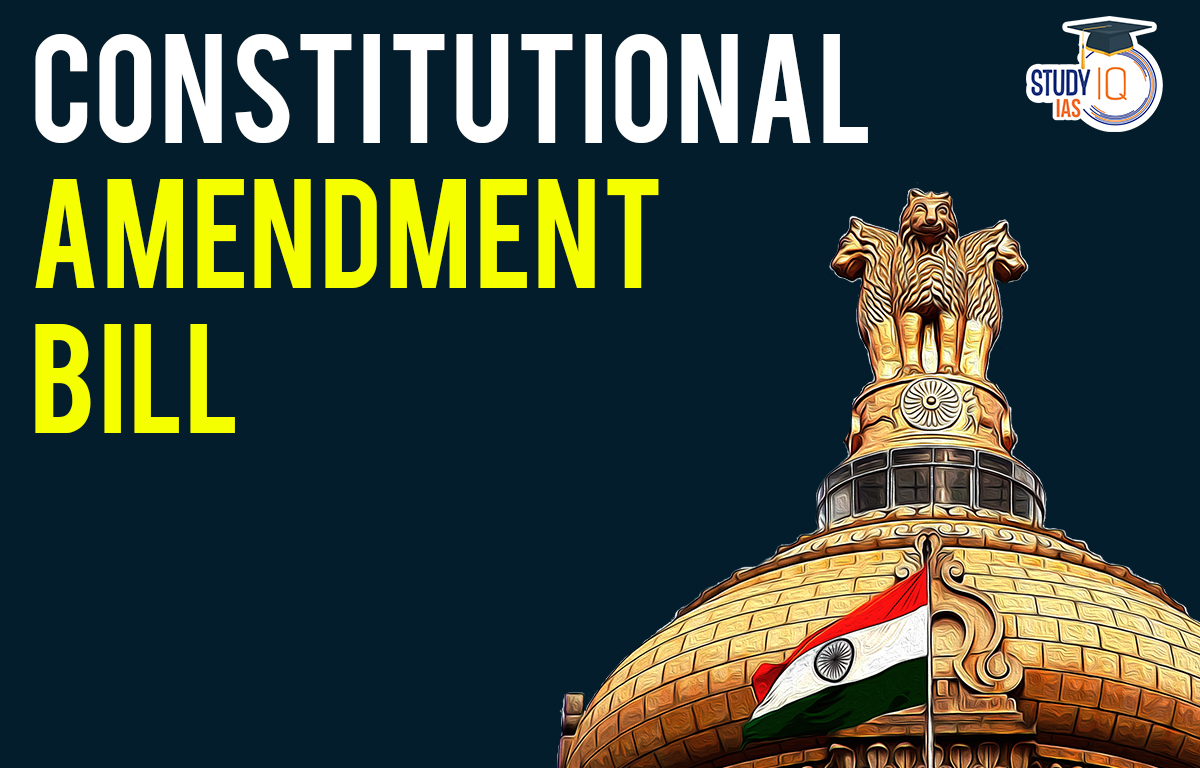Table of Contents
Constitutional Amendment Bill
Constitutional Amendment Bill refers to a proposed amendment to the Constitution. The procedure for amending the Constitution is outlined in Part XX (Article 368) of the Indian Constitution. A bill can be introduced by a minister or a private member without needing the president’s approval. This process helps maintain the integrity of the Constitution and limits Parliament’s power. As of October 2021, there have been 105 amendments to the Indian Constitution.
The Constitutional Amendment Bill is an important part of Indian Polity which is an important subject in UPSC Syllabus. Students can also go for UPSC Mock Test to get more accuracy in their preparations
Understanding the meaning of Constitutional Amendment Bill
Only a Bill introduced in one of the Houses of Parliament is capable of enacting a constitutional amendment. The state legislature will not hear the constitutional amendment measure. Due to the requirement that the Constitutional Amendment Bill be enacted by each house separately, Rajya Sabha and Lok Sabha have equal status with regard to it.
No space is designated for group seating. If the constitutional amendment measure calls for changing federal laws, a simple majority of the state legislatures must approve it.
Different Ways to Amend in Indian Constitution
The Indian Constitution can be amended in several ways:
- By a Simple Majority of Parliament: This means more than 50% of the members present and voting. No special procedure is needed for certain articles, like:
- Article 2 (admission of new states)
- Fifth Schedule (administration of scheduled areas)
- Citizenship laws
- Elections to Parliament and state legislatures.
2. By a Special Majority of Parliament: This requires a majority of the total membership of each house and two-thirds of those present and voting. Examples include amendments related to Fundamental Rights and Directive Principles of State Policy.
3. By a Special Majority of Parliament and Ratification by Half of the States: This method requires approval from half of the state legislatures by a simple majority. It applies to amendments affecting the federal structure, such as the election of the President and provisions in the Seventh Schedule.
Constitutional procedure Amendment Bill
Amendment Procedure Under Article 368:
- An amendment can only start with a bill introduced in either house of Parliament (Lok Sabha or Rajya Sabha), not in state legislatures.
- The bill can be introduced by a minister or a private member without needing the president’s permission.
- It must be passed by a special majority in each house: more than 50% of the total members and two-thirds of those present and voting.
- Each house must pass the bill separately. There is no joint sitting if there’s disagreement.
- If the amendment affects federal provisions, it must also be approved by a simple majority in half of the state legislatures.
- After passing both houses and getting necessary state approvals, the bill goes to the president for assent.
- The president must approve the bill and cannot withhold or return it.
- Once the president gives assent, the bill becomes an Act, and the Constitution is amended accordingly.
Also Read: Legislative Procedure in Parliament
Constitutional Amendment Bill Type
Article 368 of the Indian Constitution allows for two different forms of amendments. Other clauses also allow for a simple majority to modify the constitution. Therefore, there are three types of bills that aim to modify the Constitution:
- Bills passed by the special majority of each house in the House of Commons;
- Constitutional Amendment Bills are passed by Parliament with a simple majority.
- A constitutional amendment bill was accepted by at least half of the state legislatures and was enacted by Parliament with a special majority.
Constitutional Amendment Bill and Its Drawbacks
Given the ease with which as many as 94 amendments have been made during the first 59 years of the Constitution’s operation, it is clear that, instead of being rigid as some critics believed during the early days of the Constitution, the Amendment Procedure for Amendment has rather proven to be too flexible.
The concern of unbiased observers should not be about the difficulty of amendment but rather about the possibility that it will be used too frequently to further political goals or to overturn judicial decisions that may appear to be unwholesome to the party in power as long as it holds a solid majority in Parliament and in more than half of the State Legislatures.
Judges may make mistakes, of course, but as has already been shown, even the highest tribunal is susceptible to changing its mind after further experience. Therefore, the constitutional amendment process should not be used frequently to override unfavorable judicial decisions in the absence of serious consequences, urgent circumstances, or a special contingency (such as the admission of Sikkim under the 35th and 36th Amendments). Doing so would cause the general public to have little respect for the judiciary, shattering the very foundation of constitutional government.
Constitutional Amendment Bill UPSC
What we must realize is that the constitution is the backbone of this democracy. While it was revolutionary of the fathers of our constitution to provide provisions to amend the constitution, it is essential that such provisions are not misused. Misuse could result in excessive power of the legislative or the executive which could tear the fabric of our democracy. Students can read all the details related to UPSC by visiting the official website of StudyIQ UPSC Online Coaching.


 Admiralty (Jurisdiction and Settlement o...
Admiralty (Jurisdiction and Settlement o...
 Enemy Property Act in India, Background ...
Enemy Property Act in India, Background ...
 Phone-tapping in India, Legal Framework ...
Phone-tapping in India, Legal Framework ...





















